Today I am linking up with The Mud Colony Blog
These cups are slipcast.
Slipcasting is an industrial process where by liquid clay is poured into plaster moulds, the plaster absorbs the water in the clay and a clay shell is formed inside the mould. Toilets and ceramic bathroom sinks are examples of industrial scale slipcasting.
I have some photos I took in the studio, that might better help me to explain the process. I apologise for the quality of the images as I wasn’t really concentrating on the photography, I was just pointing and shooting.
Shown below are my cup moulds. I have six moulds that I am using at the moment, which means that in winter I can make six cups a day and in Summer if I am lucky I can use the moulds twice and make about 18 cups over a two day cycle. I usually make cups for about a fortnight and then I will make bowls for a week, then cups again until I have enough work for a firing.
I am obsessive when I am working and if I find a form that I like to make, I will make heaps of them until I have worked them out of my system and then I wont make that form again for a while. This time last year I was making large platters and touchstones. At the moment I am making sclerophyll cups and textured dessert bowls. Who knows what I will be making come February.
Currently I have quite a few cups with sky blue highlights in stock. Once these are gone I wont go near the blue again for a while.
If I want to decorate the cups, I will paint some coloured slip on the inside of the mould. I use a paint brush that I made with a strand of my hair sticky taped to a wooden skewer. I will just randomly streak some slip on the inside of the mould as I like to work intuitively.
Here I have filled the mould with slip. Slip is liquid clay that has had its chemical structure altered slightly by the process of adding a deflocculant to a bucket of liquid clay, this deflocculant introduces positive electrical charges to all particles, causing them to repel one another and remain in suspension. A deflocculated suspension gives flowing consistency with less water content, meaning lower drying shrinkage—especially important in slip-casting. I use a combination of dispex and sodium silicate in my slip as that gives the slip cast clay a greater flexibility at the leather hard stage.
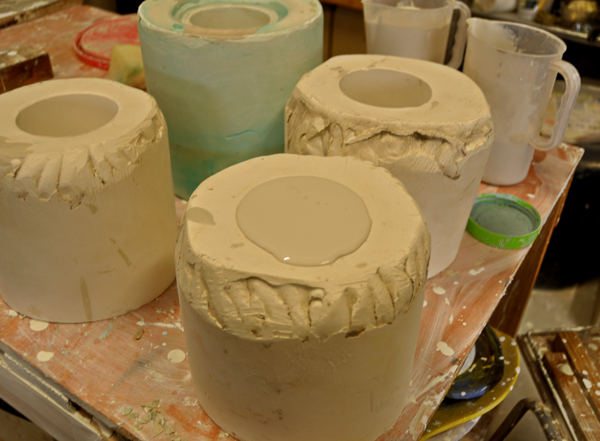 Just so that you don’t think that I am always so scientific, I thought I would also show you my working conditions. I call this creative chaos.
Just so that you don’t think that I am always so scientific, I thought I would also show you my working conditions. I call this creative chaos.
Once I am happy with the thickness of the cup I empty the slip back into the bucket. You can see that a nice clay shell has formed here and the cup is about 3-4 mms thick.
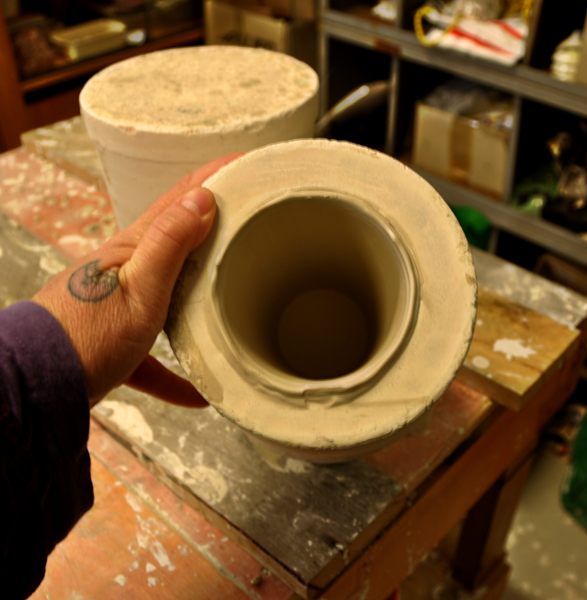 Now I leave the moulds to drain and I wander off to do other stuff in the studio. (Daydream mostly)
Now I leave the moulds to drain and I wander off to do other stuff in the studio. (Daydream mostly)
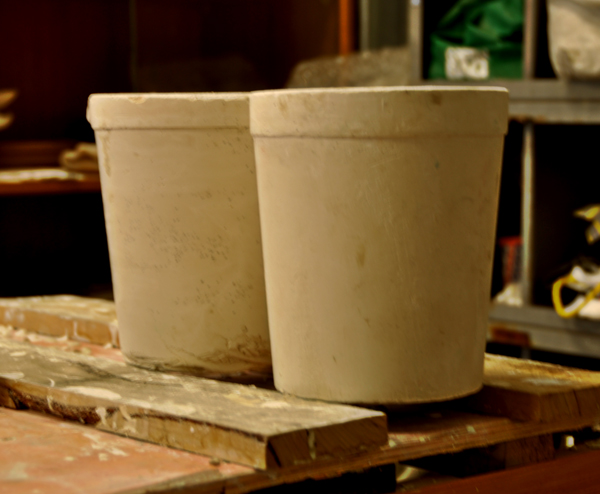 Sometimes I forget about the cups and they fall out of the moulds onto the table.
Sometimes I forget about the cups and they fall out of the moulds onto the table.
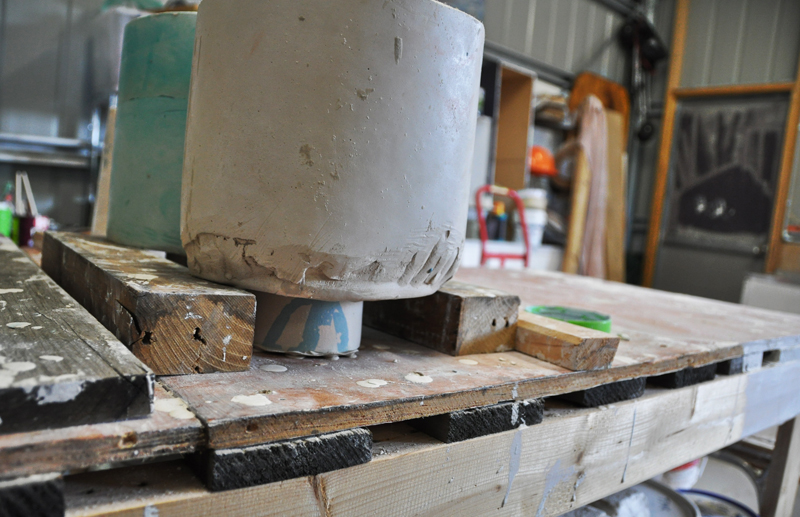 And then sometimes they get stuck. The cups are still very soft so if I try to prise them off the table I will squish them so I leave them for a bit and wander off again.
And then sometimes they get stuck. The cups are still very soft so if I try to prise them off the table I will squish them so I leave them for a bit and wander off again.
 I managed to unstick these cups from the table, with the minimum amount of squishing.
I managed to unstick these cups from the table, with the minimum amount of squishing.
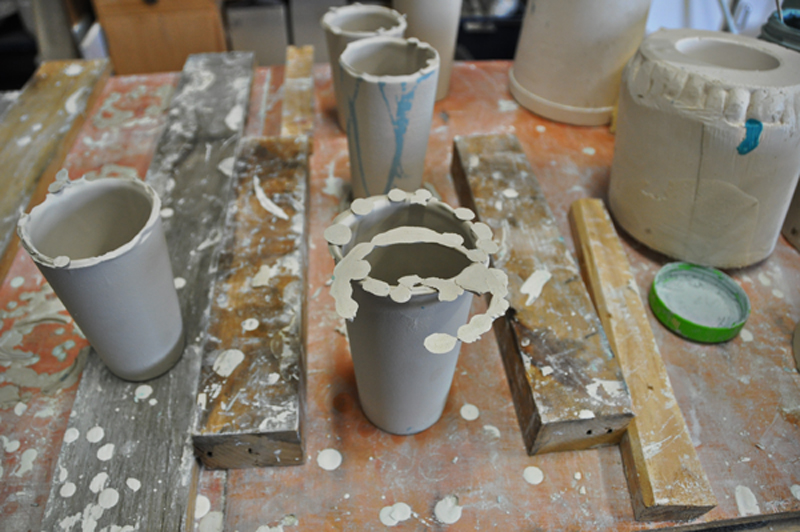 Now I will tidy up the rims and cut in my tell tale uneven rim, which makes each cup unique. I form a relationship with my work as I am making and I believe that a piece of my spirit goes into each thing I make. The uneven rims on the cups make you, the buyer, form your own relationship with the cup as you work out how to comfortably hold and drink from it.
Now I will tidy up the rims and cut in my tell tale uneven rim, which makes each cup unique. I form a relationship with my work as I am making and I believe that a piece of my spirit goes into each thing I make. The uneven rims on the cups make you, the buyer, form your own relationship with the cup as you work out how to comfortably hold and drink from it.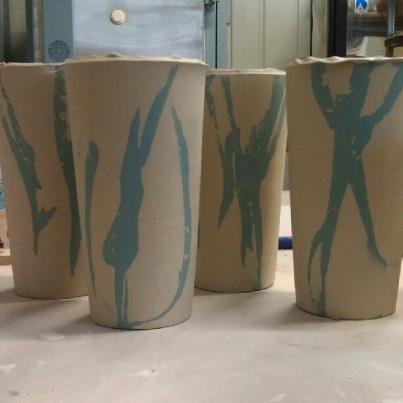 Here are two of my medium sized unfired cups next to a third that has been fired. This shows how much the clay shrinks from start to finish. I make three sizes of cup. Small ones which hold about 150 mls, medium 250 mls and large 350 mls
Here are two of my medium sized unfired cups next to a third that has been fired. This shows how much the clay shrinks from start to finish. I make three sizes of cup. Small ones which hold about 150 mls, medium 250 mls and large 350 mls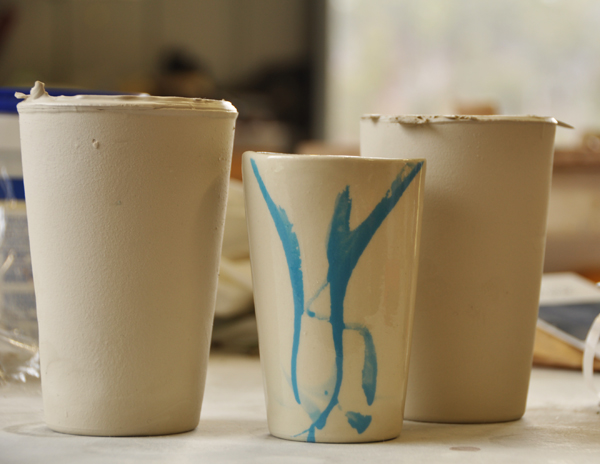 And Tadaa, four finished large cups.
And Tadaa, four finished large cups.
For more lovely ceramic posts you can simply click over to The Mud Colony Blog and check out a wealth of ceramic talent.

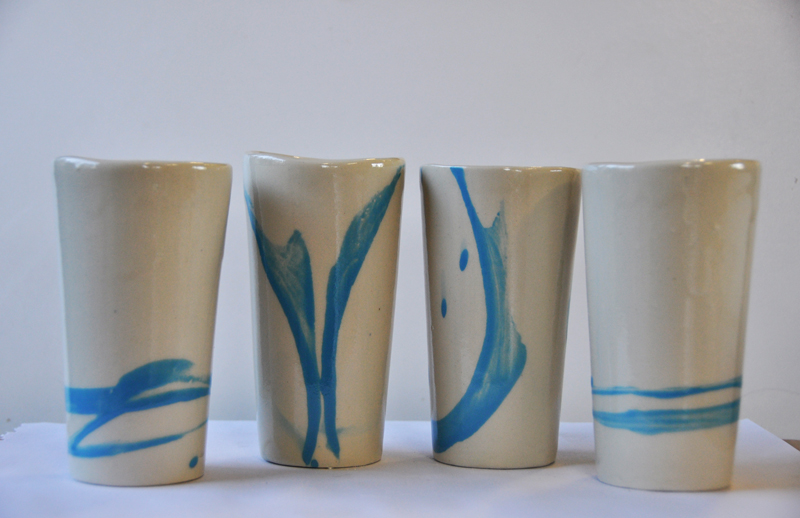
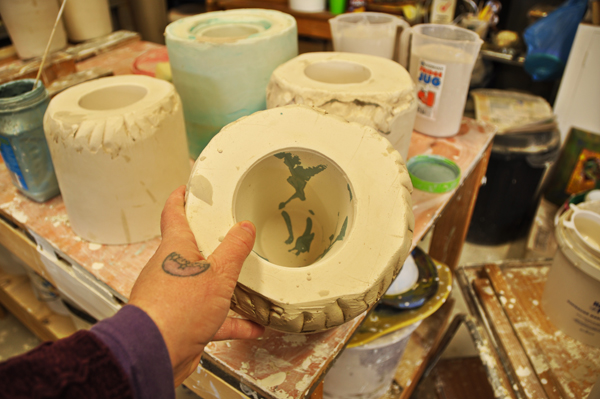
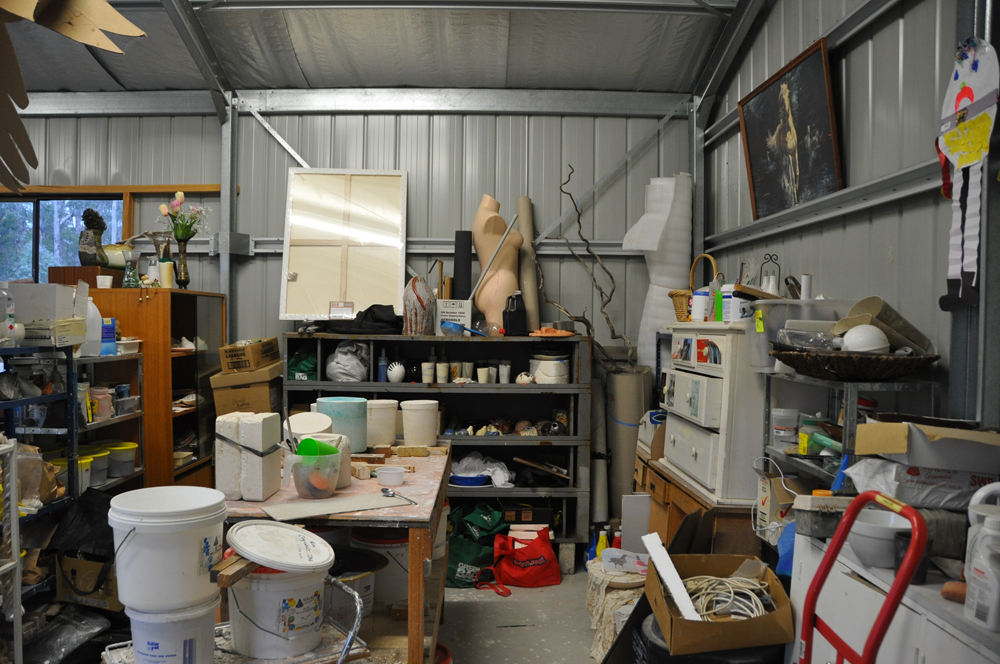
Comments on this entry are closed.
Hiya!
Amazing how much the clay shrinks I always think! When I make mugs I think ‘that handle is for a GIANT!’
I’ve been going to try painting slip into the moulds before casting, I’m always scared it won’t adher, but of course it will, if it’s the same clay body.
ps is the slip 3-4mm, not 30-40? Sorry, just that WOULD be a giant cup 🙂
Lol that would be a HUGE cup. heh. Thanks for coming over and saying hello. Paint some slip into your moulds, it is fun 🙂
Beautiful, beautiful, beautiful. As always. Thank you.
Thank you, I really appreciate the fact that you are here cheering me on 🙂
I love these! Is there a matching platter or wide bowl available?
I hadn’t thought about it River, what sort of platter? How wide a bowl?
Love, love, love, love.
I am pleased Liz. I enjoy using the ones I have here.
Lovely work and post Kim. I used to make a heap of art deco slipcast mugs years ago. I actually still have that mold…. somewhere. You may have inspired me to get it out for another run. Thanks 🙂
Yes, give it a whirl 🙂 Thanks for coming over and saying hello.
So lovely. You clever thing, Kim:)
a big hello from houston, texas. lovely work you do there in your studio. do you have a post about making the molds for the slipcasting?
Thanks for this post… I’m learning how to do this in my ceramics class and enjoying the process. I’ve never used the wheel and am sure it will take years to master… wanting a solution to make a number of the same forms (for an idea I have) the teacher suggested slip casting…